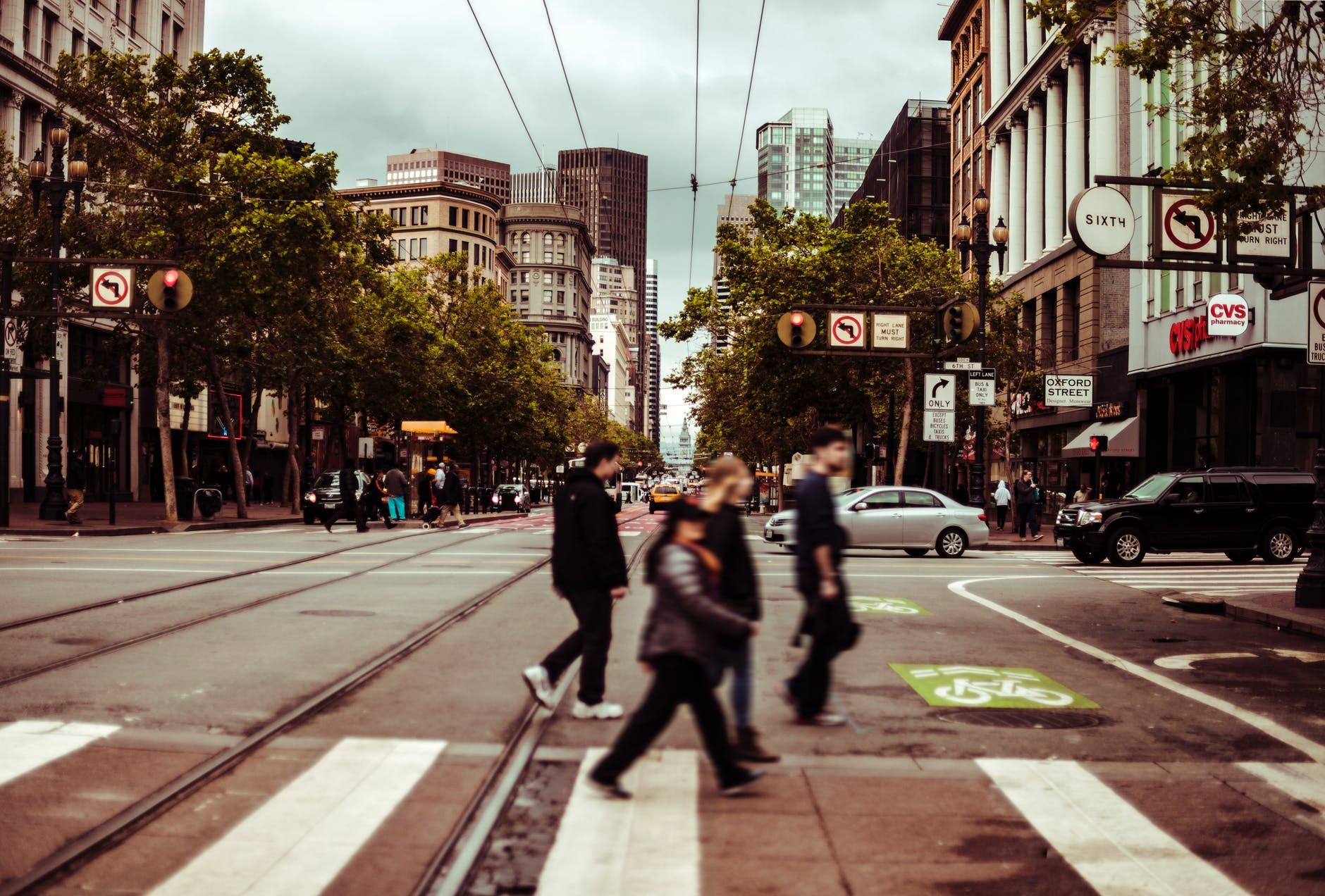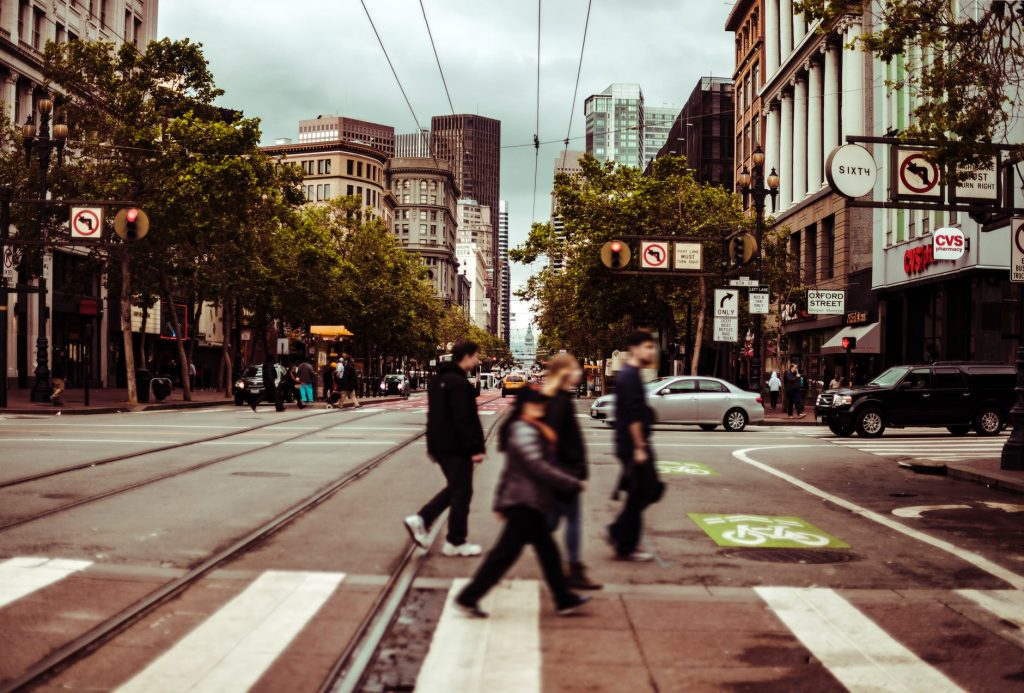
Photo by Quintin Gellar on Pexels.com
A few decades back a trip to Europe was a more dangerous experience if you were driving on the roads, biking or walking in European cities. But as Joe Cortright who contributes to Strong Towns and runs the City Observatory notes that paradigm has changed. Meanwhile the pedestrian fatality rate on roads in the United States has risen by 50 percent in just one decade, from 4,109 dying in 2009 to 6,227 dying in 2018.
While Europeans have high rates of vehicle ownership, pedestrian fatality rates are lower, declining 36 percent in the last eight years from 8,342 deaths to 5,320.
Cortright asks~if more people walk in Europe than the United States, why aren’t fatality rates the same or more for pedestrians?
As Cortwright observes: “It’s worth noting that this trend is occurring even though walking is far more common in Europe, streets are generally narrower, and in older cities, there aren’t sidewalks, but pedestrians share the roadway with cars. Despite these factors, Europe now has a lower pedestrian death toll per capita than the U.S.”
The pedestrian death rate in the United States per million population is 75 percent more than in Europe. European cities have narrower streets with narrow or non-existent sidewalks and slower street speeds due to enforcement or design.
Europe also has the same uptake with smartphones and other items that are viewed as providing pedestrian distraction, yet less pedestrians die.
So is it the existing narrower streets, better road design, slower speeds, and better driver behaviour that is responsible for less pedestrian fatalities? And if those factors are so successful, what do we need to duplicate in North America?

Photo by rawpixel.com on Pexels.com













Really? The very things that make streets safer for pedestrians are cited as threats to pedestrians?
Unlike most US cities most European cities were designed 200 or even 500+ years ago before the invention of cars, or elevators. By definition, European cities (now the core of these often far larger) cities were very walkable. Add the brutal often very humid summer weather in most US cities, especially in the south, and far fewer public buses or subways, and you see far more car use, and less of a bike or walk culture. That is slowly changing as you see today in Austin or Dallas, TX for example, but very slowly.
Vancouver, and a few US cities in more temperate climate like WA or OR are the exception from the rule. That redesign will take decades, many generations.
Car companies have blood on their hands simple as that. 20 years at least to fix their killer SUVs but they keep making them bigger and faster to compensate for something I guess.
https://www.motherjones.com/politics/2000/08/killer-grilles/
Don’t car companies merely supply what consumers demand? No one is forced to buy a V8 SUV with poor gas mileage or a non-hybrid yet equally gas wasting large sedan or van? Ditto with oil or pipeline companies. Don’t they merely supply what consumers demand?
No one is forced into a large car, SUV or van, yet millions upon millions do it anyway, every year. 80M vehicles are produced annually. Why are they not all ( or even most of them) small or fuel efficient, hybrid or electric? What does that tell you about your fellow earth inhabitants?
People’s habits change slowly. Only if something far better comes along do they switch. Most changes to transportation thus are small, organic, and will take decades, generations likely ..
If car companies merely supplied what consumers demand there wouldn’t be non-stop car marketing everywhere you turn. It’s one of the biggest propaganda machines out there. Consumers demand what the automotive industry wants you to buy. The big SUVs and trucks based on the oldest drive train technologies are the least fuel regulated and most profitable.
Don’t dealers just supply what Junkies demand?
deleted
If advertising doesn’t work, why is it such a big industry?
What gets advertised? Big-ass trucks. Like the ad currently running on local radio where an outdoors lover says “I sincerely wish there was a F150 in every driveway.”
Irresponsible marketing that should never have been approved by any company with an environmental conscience.
And that’s why trucks and booze define the Canadian psyche. Because that’s what you see on the TV.
Not rocket surgery by any stretch to figure this out.
And people are absolutely forced into cars when realistic alternatives don’t exist.
Advertising works. End of story. Any attempts to suggest otherwise are b.s.
Wait – so in 2009 / 2010 Europe had TWICE as many deaths as the Unites States ?
United States
2009 – 4,109 deaths
2018 – 6,227 deaths
Europe
2010 – 8,342 deaths
2018 – 5,320 deaths
Europe has more than double the population so one might expect that all else being equal. The point is Europe is going in the right direction while the US is not – in so many ways.
Can’t hit what ain’t there.
Like the song says, ‘Nobody walks in L.A. ‘
“You won’t see a cop walkin’ on the beat
Nobody’s walkin’, walkin’, walkin’
You only see ’em drivin’ cars out on the street
Nobody’s walkin’, walkin’, walkin’
You won’t see a kid walkin’ home from school
Nobody’s walkin’, walkin’, walkin’
Their mothers pick ’em up in a car pool
Nobody’s walkin’, walkin'”